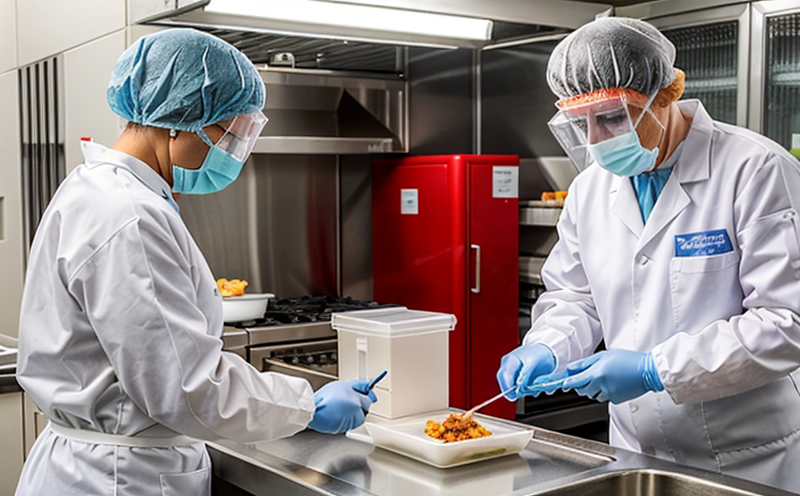AOAC 2015.06 Detection of Astrovirus in Ready-to-Eat Foods
The AOAC International Method 2015.06 provides a comprehensive protocol for the detection and quantification of astroviruses, particularly those that are pathogenic to humans, in ready-to-eat (RTE) foods. This method is essential for ensuring food safety and compliance with international standards such as ISO, ASTM, EN, and IEC.
Astroviruses belong to the family Astroviridae and can cause gastroenteritis, especially among children and immunocompromised individuals. The presence of astrovirus in RTE foods poses a significant risk due to their potential for causing foodborne illnesses. This method targets the detection of these viruses through specific nucleic acid amplification techniques that ensure high sensitivity and specificity.
The AOAC 2015.06 protocol involves several critical steps including sample collection, RNA extraction, reverse transcription, polymerase chain reaction (PCR), and final quantification using real-time PCR technology. The method is designed to minimize cross-contamination risks by incorporating stringent laboratory procedures and quality controls.
The test parameters for this AOAC method are strictly defined to ensure accurate detection of astroviruses. Specimens must be collected from various RTE food products such as salads, sandwiches, ready-to-eat cereals, and pastries. Proper specimen preparation is crucial; samples should undergo homogenization followed by nucleic acid extraction using commercially available kits that comply with the method's requirements.
The instrumentation used for this test includes a real-time PCR machine equipped with appropriate software for data analysis. This equipment allows for precise quantification of viral RNA, which can then be correlated to potential contamination levels in the food product.
Acceptance criteria are stringent and reflect industry standards. Samples that yield positive results above a certain threshold value (typically set at 10 copies/mL) are considered contaminated with astrovirus, necessitating further investigation into production processes to prevent recontamination.
The AOAC 2015.06 method is widely recognized for its reliability and accuracy in detecting astroviruses in RTE foods. It supports compliance with international food safety regulations and helps protect public health by identifying potential sources of contamination early enough to take corrective actions.
Implementing this method not only enhances product quality but also strengthens a company’s reputation as a leader in food safety practices. By adhering to such rigorous testing protocols, businesses can reassure consumers about the safety of their products and maintain trust within the marketplace.
Customer Impact and Satisfaction
- Improved Product Quality: Ensures that only safe RTE foods reach the market.
- Enhanced Customer Trust: Builds confidence among consumers regarding product safety.
- Compliance with Regulations: Meets stringent international food safety standards.
- Reduced Risk of Contamination: Identifies and addresses potential contamination sources promptly.
Competitive Advantage and Market Impact
- Enhanced Reputation: Establishes the company as a leader in food safety practices.
- Innovation Leadership: Demonstrates commitment to cutting-edge testing methodologies.
- Market Differentiation: Offers superior product quality that sets it apart from competitors.
- Potential for Expansion: Attracts more customers seeking safer food options, thereby expanding market share.





